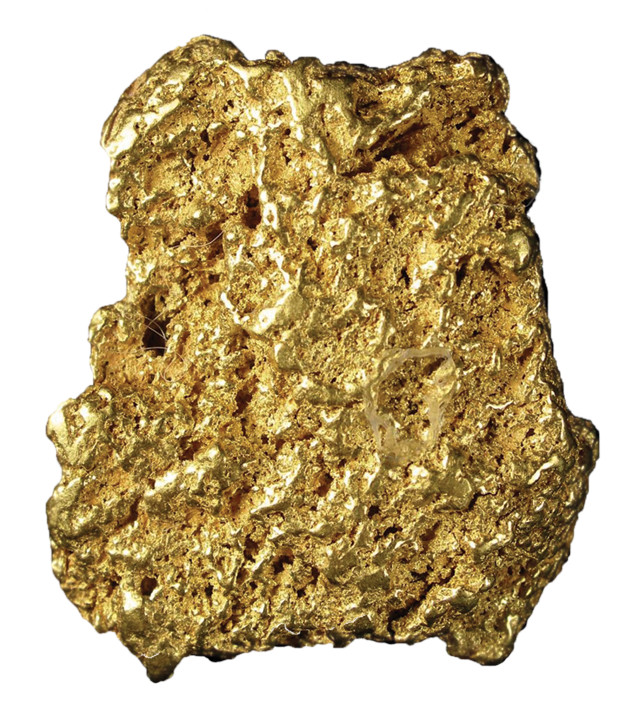
by U.S. Geological Survey Friday, June 19, 2015
U.S. Geological Survey mineral commodity specialist Micheal W. George has compiled the following information on gold, one of the most coveted metals.

A 20-gram gold nugget recovered from a mine near Bendigo in Victoria, Australia. Credit: ©Rob Lavinsky, CC BY-SA-3.0.
Gold was highly valued by early civilizations for its scarcity, durability and characteristic color, reminiscent of the sun, which was worshiped by some as a deity. It was first recovered from streambed gravels (placers), where it occurred in native form, and thus did not require extraction from ores. It was both essentially indestructible and easily worked. Gold nuggets were prized possessions that could be fashioned into bars of different standard weights and into ornaments and items of adornment that also served as portable wealth. Gold leaf (gold beaten into thin sheets) has been used to decorate significant architectural structures since ancient times. In the 7th century B.C., the Etruscans used gold to make false teeth, and it is still used in dentistry today due to its nontoxicity, durability and beauty.
These manufactured forms, crude at first, became increasingly refined and specialized through history, eventually finding use as jewelry and currency. The latter application originated soon after the founding of the first cities around 4000 B.C. This innovation is commonly ascribed to the Sumerians, who lived in what is now southern Iraq.
Today, gold is used in contacts, switches, relays and connectors in electronics. Gold is also used as a radiation shield on most space vehicles; in the form of 0.15-millimeter-thick sheets, it deflects solar heat and radiation.
Because gold does not corrode, has significant intrinsic value, and, historically, has not been used in dissipative end uses, much of the gold mined throughout history can still be accounted for today. Of the roughly 176,000 metric tons of mined gold produced cumulatively throughout the world, only about 2 percent is unaccounted for. The remaining 98 percent of the mined gold has been or will be recycled at some point in time — meaning the gold in the relays in your smartphone or your gold necklace may have once been part of Cleopatra’s jewelry.
For more information on gold and other mineral resources, visit minerals.usgs.gov/minerals.
In 2013, estimated global gold mine production was 2,800 metric tons.
Estimated domestic uses (excluding investment) were in jewelry (41 percent); electrical and electronics (35 percent); official coins (18 percent); dental (4 percent); and other (2 percent).
In 2013, the five leading producers, among more than 100 gold-mining countries, accounted for 47 percent of global gold production. In descending order of production volume, these were: China, Australia, Russia, United States and South Africa.
If Nevada, which accounts for almost 75 percent of U.S. mine production, were a separate country, it would be the fourth-leading gold producer in the world.
More than 75 percent of the gold ever mined has been extracted since 1910.
All of the gold ever mined would fit in a cube measuring 21 meters on a side.
Gold and copper are the only metals that are not “silvery” in appearance.
An average human’s weight in gold (about 91 kilograms) would have a value of almost $3.5 million (at $1,180 per troy ounce).
One troy ounce of gold (31 grams) can be stretched into a wire 5 microns thick and 80 kilometers long, or flattened into a sheet 9.3 meters square.
© 2008-2021. All rights reserved. Any copying, redistribution or retransmission of any of the contents of this service without the expressed written permission of the American Geosciences Institute is expressly prohibited. Click here for all copyright requests.